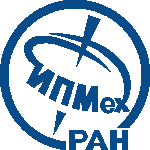
|
ИСТИНА |
Войти в систему Регистрация |
ИПМех РАН |
||
[Aquatic macrophyte Ceratophyllum demersum immobilized the nanoparticles of Au which were added to water.]статья
- Авторы: Ostroumov S.A., Kolesov G.M.
- Журнал: Doklady Akademii nauk SSSR
- Том: 431
- Номер: 4
- Год издания: 2010
- Издательство: Akademiia Nauk Sssr
- Местоположение издательства: Russian Federation
- Первая страница: 566
- Последняя страница: 569
- Аннотация: http://istina.msu.ru/publications/article/4465502/; The English translation of this paper was published. The abstract of the English edition is here: http://istina.msu.ru/media/publications/articles/7e7/0f5/4493477/10DBS.Au.C.demersum.E.DKBL124.pdf; Explanation: 'Ceratophyllum demersum' is the Latin scientific name of a species of water higher plant. The common name of this plant species is hornwort, rigid hornwort, coontail, or coon's tail. It is a submerged, free-floating aquatic plant, with a cosmopolitan distribution, native to all continents except Antarctica. Ostroumov S. A., Kolesov G. M. The aquatic macrophyte Ceratophyllum demersum immobilizes Au nanoparticles after their addition to water. - Doklady Biological Sciences, 2010 (Mar - Apr), Vol. 431, p. 124–127. [© Pleiades Publishing, Ltd., ISSN 0012-4966]. Original Russian Text © S.A. Ostroumov, G.M. Kolesov, 2010, published in Doklady Akademii Nauk, 2010, Vol. 431, No. 4, pp. 566–569. Bibliogr. 15 refs. Presented by Academician M.A. Fedonkin, July 31, 2009. Received February 11, 2009. DOI: 10.1134/S0012496610020158. http://scipeople.com/publication/69766/. In the paper, it was discovered that the aquatic plant (macrophyte) Ceratophyllum demersum immobilized gold (Au) nanoparticles after their addition to water. This is the first time it was shown that the nanoparticles of gold (Au) in substantial amount bind to the living biomass of the aquatic macrophyte, Ceratophyllum demersum. The concentrations of Au were measured in the samples of the phytomass using neutron activation analysis (NAA). As a result of the binding and/or immobilization of the nanoparticles, the amount of Au in the samples of the phytomass increased manifold (by a factor of 430) above the background level of gold in the plant tissues. The increase was by two orders of magnitude. The new data added some new information to the modern vision of the multifunctional role of the biota in the migration of elements in aquatic ecosystems. Also, the result added new information to the studies of interactions of Au with organisms that may contribute to new biotechnologies. http://www.ncbi.nlm.nih.gov/pubmed/20506851; PMID: 20506851 [PubMed]; http://www.springerlink.com/content/j487667871w02h28/; www.springerlink.com/index/J487667871W02H28.pdf; FULL TEXT OF THE PAPER ONLINE, FREE: http://www.scribd.com/doc/41165833/; http://istina.msu.ru/media/publications/articles/7e7/0f5/4493477/10DBS.Au.C.demersum.E.DKBL124.pdf; http://www.ncbi.nlm.nih.gov/pubmed/20506851; PMID: 20506851 [PubMed]; http://www.springerlink.com/content/j487667871w02h28/; www.springerlink.com/index/J487667871W02H28.pdf; http://www.scribd.com/doc/41165833/; Key words: nanotechnology, nanoparticles, Au, gold, biogeochemistry, biotechnology, aquatic plants, macrophyte, Ceratophyllum demersum, Immobilization, water quality, monitoring, environmental science, ecology, nanoparticles in aquatic environment, hornwort, rigid hornwort, coontail, coon's tail, nanomaterials,
- Добавил в систему: Остроумов Сергей Андреевич